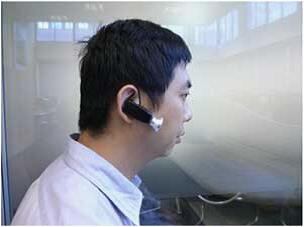Six participants were fitted with a bespoke wide-angle micro-camera worn on the ear.
The researchers from the Scottish Universities Environmental Research Centre at the University of Glasgow and the Institute of Global Health Innovation at Imperial College London compared accuracy of food diaries alone and together with the audiovisual recordings over a total period of 14 days.
Food diaries and recall questionnaires are commonly used in nutrition research; however they have been shown in the past to be subjective.
“A common weakness of nutritional research is not being able to accurately assess the dietary intake of people in their home environments.
“To understand the impact of nutritional health in the population there is a need to understand and measure energy expenditure and intake accurately,” they wrote.
Indeed estimates from a sample of the 2000 UK National Diet and Nutrition Survey suggested under-reporting occurred in up to 88% of the sample.
Propensity to under-report was also said to be higher in obese people compared with lean individuals at 19 and 2%, respectively, in certain sub samples.
In this latest study they used doubly labelled water (DLW) to estimate energy expenditure and intake as a reference point - described by the researchers as a “gold standard method”.

They found an average daily deficit of 3912 calories using food diaries to estimate energy intake compared with estimated energy expenditure from DLW, representing an under-reporting rate of 34%.
The cameras reduced this to 30% - similar to the improvement seen with other image-assisted dietary assessments.
However both estimates represented a statistically significant deficit compared with the DLW method, most likely due to the limited days of dietary recording collected per participant, they said.
Portion-size reporting, which can be subjective, was also improved. It also gave the researchers insights into eating behaviours like rate of chewing and eating speed and order.
“Use of the micro-camera images in conjunction with food diaries improves the accuracy of dietary assessment and provides valuable information on macronutrient intake and eating rate.
“There is a need to develop this recording technique to remove user and assessor bias,” they concluded.
Each camera cost about £20 (€28).
Camera shy?
The participants were trained how to use the devices before the study and asked about their experiences afterwards.
The researchers said in general the micro-camera was easily worn and non-invasive when compared to other methods like using a mobile phone to take images or wearing a camera in a box around the neck.
However while the cameras improved reporting accuracy, it also introduced the issue of user bias since the participants had to turn on the camera to film the meal they were eating.
The researchers said they were now upgrading the technology to be automatically switched on by the sound of eating.
The results also suggested eating behaviour was changed by wearing the device, with lower average reported energy intakes.
“In the longer term, the development of food recognition technologies would greatly enhance dietary recording methods; however, this is very challenging to achieve, given the enormous variety of foods available, their multiple shapes, forms and textures – for example, carrots could be mashed, raw or chopped – as well as cooking methods – for example, fried, boiled, steamed – which may or may not change their appearance and alter their nutritional value,” they said.
Recharging
All of the participants completed the study. However one participant was removed from the analysis as the camera failed to record usable data.
Of the five remaining participants, a total of ten days’ worth of eating episodes were recorded using the micro-camera - equivalent to two days per participant out of the three days they had hoped for due to limited battery life of the camera.
Source: British Journal of Nutrition
Published online ahead of print, doi:10.1017/S0007114515004262
“A pilot study to determine whether using a lightweight, wearable micro-camera improves dietary assessment accuracy and offers information on macronutrients and eating rate”
Authors: C. Pettitt, J. Liu, R. M. Kwasnicki, G.Z. Yang, T. Preston and G. Frost
